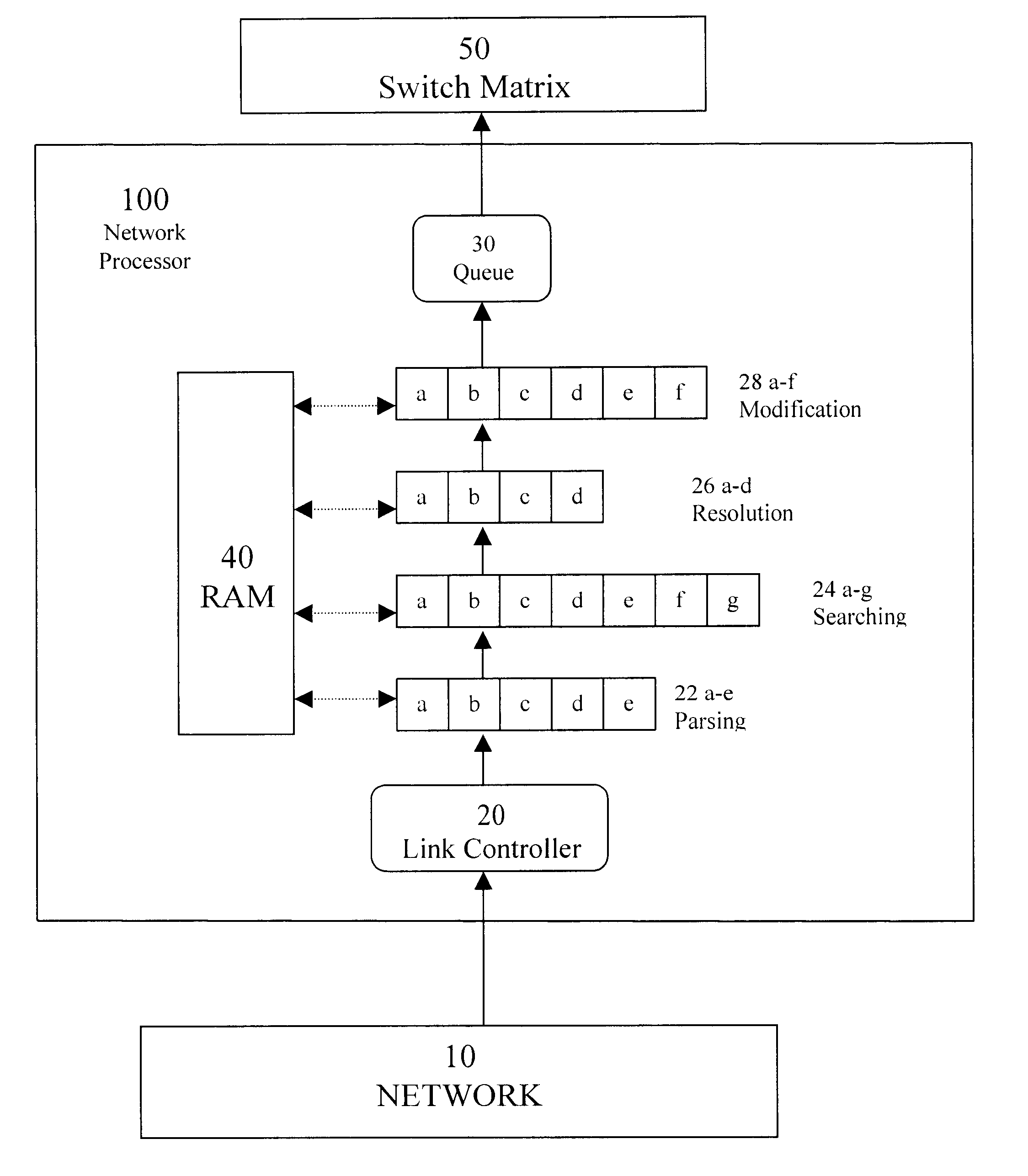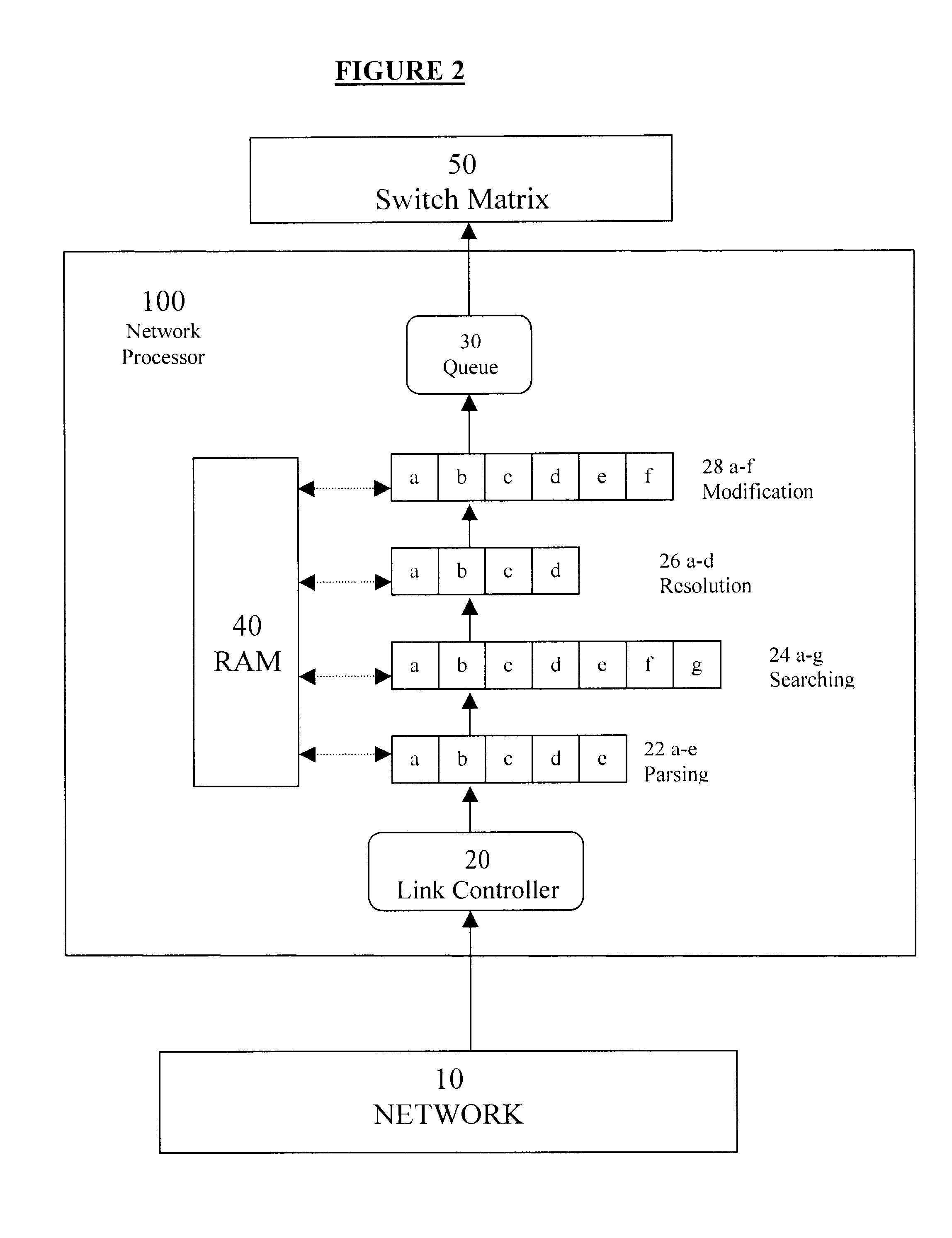High-performance network processor
a network processor and high-performance technology, applied in data switching networks, multiplex communication, instruments, etc., can solve the problems of inability to modify the data path, the time required to perform complex tasks, and the use of numerous commands
- Summary
- Abstract
- Description
- Claims
- Application Information
AI Technical Summary
Problems solved by technology
Method used
Image
Examples
example 1
Parsing a Packet
Table 1 provides a comparison of packet processing tasks performed with TOPcore technology versus a general RISC processor of the prior art.
For Example No. 1, Table 1 lists the number of clock cycles that are required to parse a typical HTTP (Hyper Text Transport Protocol) or RTSP (Real Time Transport Protocol) packet and determine the URL. Using the parser of the present invention, it takes 60 clock cycles, as compared to 400 instructions with a RISC processor (for a URL of 32 characters).
example 2
Searching URL Tables
Table 1 provides the number of clock cycles that are required to lookup the URL in a typical HTTP or RTSP packet in the URL tables. Using the search sub-system of the present invention, up to 6 clock cycles are required, regardless of the length of the URL, as compared to 200 clock cycles using a RISC processor of the prior art.
example 3
Resolving a Multicast Rotating Decision
Table 1 lists the number of clock cycles that are required to resolve a multicast routing decision based on PIM-SM (Protocol Independent Multicast-Sparse Mode). This type of packet is frequently used for sending multi-client frames across the Internet, such as Voice over IP (VOlP) and videoconferencing. Using the search sub-system of the present invention, no more than 8 clock cycles are required, as compared to 80 clock cycles with a RISC processor of the prior art.
PUM
 Login to View More
Login to View More Abstract
Description
Claims
Application Information
 Login to View More
Login to View More - R&D
- Intellectual Property
- Life Sciences
- Materials
- Tech Scout
- Unparalleled Data Quality
- Higher Quality Content
- 60% Fewer Hallucinations
Browse by: Latest US Patents, China's latest patents, Technical Efficacy Thesaurus, Application Domain, Technology Topic, Popular Technical Reports.
© 2025 PatSnap. All rights reserved.Legal|Privacy policy|Modern Slavery Act Transparency Statement|Sitemap|About US| Contact US: help@patsnap.com



